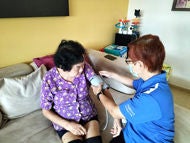What is - Congenital Hip Dislocation (Baby)
Symptoms of Congenital Hip Dislocation (Baby)
Congenital Hip Dislocation (Baby) - How to prevent
There are no proven natural or clinically approved methods for preventing CHD.
Congenital Hip Dislocation (Baby) - Causes and Risk Factors
Causes of Congenital Hip Dislocation (Baby)
A child with CHD usually does not have any symptom at birth. CHD can be detected through newborn screening by a doctor. The doctor will perform certain hip manoeuvres to check if the femoral head moves in and out of the acetabulum. If CHD is suspected from clinical screening, your baby will need to undergo an ultrasound scan of the hips to confirm diagnosis. You may be given an appointment with your doctor and/or bone specialist (called an orthopaedic surgeon) for further treatment.
Risk factors of Congenital Hip Dislocation (Baby)
Several risk factors may predispose your baby to developing CHD. These include a breech position in the womb, especially if your baby had maintained the breech position with straight legs (called the extended breech position) due to limited mobility in the womb. Family history of CHD also increases your child’s risk of CHD.
Treatment for Congenital Hip Dislocation (Baby)
Babies with CHD can often be treated with an abduction splint, a device that reduces the dislocation and keeps the femoral head within the socket while the baby is growing. In very few cases where the femoral head continues to dislocate out of the socket, surgery may be necessary to reduce the dislocation.
When To Seek Help
It is important to screen for CHD at birth. If undetected and untreated, CHD can lead to a difference in limb length and affect gait when the infant starts learning to walk from nine months old.
Contributed by
The information provided is not intended as medical advice. Terms of use. Information provided by SingHealth.
Get to know our doctors at SingHealth Hospitals in Singapore.
Get to know our doctors at SingHealth Hospitals in Singapore. here.




















